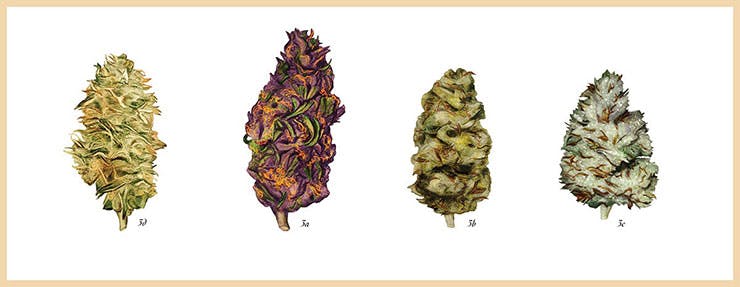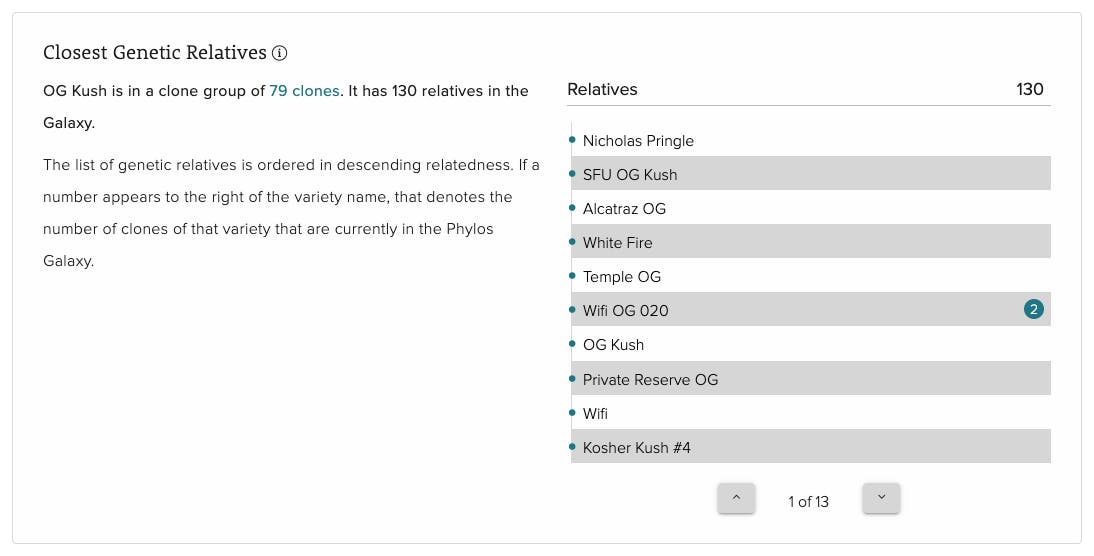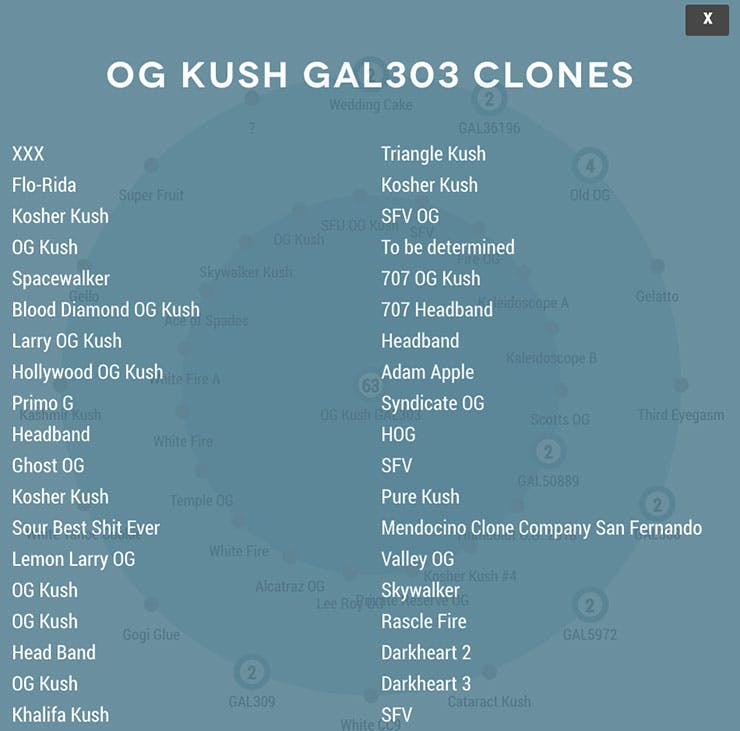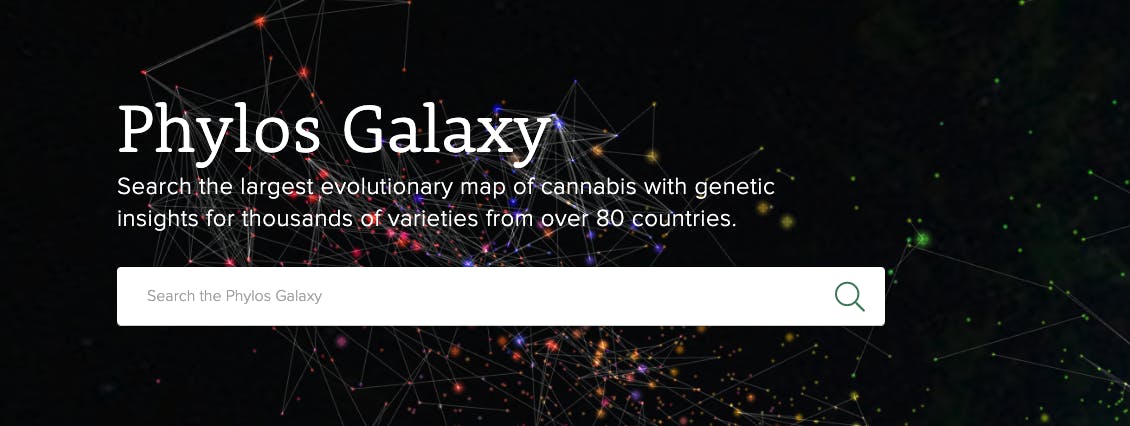
Searching for the perfect variety
We can thank the unsung heroes of the cannabis world—the breeders—for the wild diversity of cannabis varieties we see today. For example, check out the otherworldly purple of Sirius Black. And Pineapple Upside Down Cake, which smells exactly like its name. Or there’s The MAC, which reached cult status for its frosty-white trichomes — those mesmerizing crystal-flecked hairs you see on cannabis flower.
A clear advantage of outrageous cannabis diversity is hunting for unicorns—those unique varieties everyone wants. Many growers “phenohunt,” planting new seeds, growing them to maturity, and searching for ones with particular characteristics such as color, smell, or THC and CBD level. To be sure, incredible plants are found this way, but reproducing the exact same plant with the exact same phenotypic characteristics is very difficult to do from seed, hence the prevalence of cloning. Even then, different growth environments can play a major role in how a genotype, the genetic constitution of an individual organism, expresses itself.
Breeders take creating the next new thing seriously. Ultimately, what defines the perfect variety depends on what a breeder is trying to achieve — and consumers may be surprised to learn that it’s not always high THC. Sometimes breeders select for plants with low THC and high CBD levels or shorter plants because they work better in their production environment. Many breeders have visions of incorporating traits like powdery-mildew resistance, higher yield and shorter flowering time.
Before making this leap into targeted breeding, understanding your plant’s genetics and how they express themselves is key.

Illustration by Ellinor Larson
The modernization of cannabis breeding
The genetics of cannabis have been shaped by generations of experimentation and breeding. Unlike with most other plants, however, much of this work has been shrouded in secrecy. As a result, cannabis’ potential for improvement has, until very recently, been a complete mystery. We now have the kind of technology that allows us to sequence plant varieties and analyze their DNA to understand their genetic makeup.
Given the genetic diversity of Cannabis sativa, discussed in Part 1 and Part 2 of this series, plant breeders have nearly endless opportunity to create new varieties with specific or unique qualities in response to numerous and varied market demands. Within the last 100 years, agriculture has been catapulted into the modern age with the application of genomic tools, but cannabis, as a result of years of prohibition, remains nearly 80 years behind other crops.
Unraveling the genetic mysteries of cannabis
In 2014, Phylos launched the Cannabis Evolution Project in collaboration with the American Museum of Natural History to collect a broad diversity of cannabis samples from around the world. The primary goal was a lofty one—help unravel the genetic mysteries of the plant and make this information publicly available to everyone. The secondary goal was even more lofty—bring consistency to the marketplace. We introduced Phylos Genotype Test in 2016, a genetic test made available to anyone who wanted to understand how their variety was related to the Cannabis Evolution Project’s database. Since the test’s launch, everyone from the hobbyist home grower to serious breeders have submitted their varieties to learn more about their genetic makeup—and new varieties are added every month. The Phylos Galaxy is an ever-changing, constantly evolving visualization of the diversity of cannabis.
Breeders and growers are all too familiar with the naming problem, and the Galaxy provides a stark visualization of this. Take, for example, the OG Kush clone group—GAL 303. This clone group includes a sample that is widely regarded to be the original, and it contains 63 genetically-identical samples submitted by different people around the country.

Closest Relatives Genetic Insight for OG Kush GAL 303
OG Kush is a widely distributed and beloved clone that has been passed around for decades. Let’s click on that center point and take a closer look. Of the 63 genetically-identical clones in the group, only three of them were submitted with the name “OG Kush.” Other names range from Headband to Skywalker to the very sincere “To be determined.”

Abbreviated list of clones names in OG Kush GAL 303
Phylos publishes data with the name the submitter assigns to the sample. As such, there is a significant amount of chaos represented in the Phylos Galaxy. Bringing order to the naming conundrum for heritage and widely-circulated popular varieties isn’t the sole function of the Galaxy. The Galaxy and Genotype Reports are powerful tools for modern breeders creating newvarieties. While we may never know what the “real” Blue Dream is, we can know with certainty when clones or progeny of a newly-created variety pop up on the Galaxy—but only if the original breeder submits it first. From there, it’s up to the breeder to use the publicly available information to support their own narrative, whatever that may be. An example is Pineapple Upside Down Cake bred by Humboldt Seed Company and grown by Hendrx Farms, marketed with the narrative “don’t buy clones from strangers.”
A closer look at the Phylos Galaxy
Each sample in the Phylos Galaxy is represented by a single glowing point, or node. The Phylos Galaxy shows thousands of these nodes, glowing and suspended in space, grouped into colored clusters. Clicking on any one of them provides access to a sidebar of additional information and an overview of its Phylos Genotype Report data.
The positions of nodes in the Galaxy are based on the top 3 components in a Principal Component Analysis. Samples that are very similar at the DNA level will be close to each other in the Galaxy, while those that are very different will be far away.
In some cases the points are connected to one another by lines, called relationship lines. DNA is inherited from parents, so it’s possible to make some very good guesses about the relationships between samples. Specifically, we look at the DNA sequence and estimate relationships using Identity By Descent — the probability that two samples share the same DNA because they are related. Lines between two plants indicate that they are first-degree relatives. This usually means they’re a parent-child pair, or, in some cases, a sibling pair.
The Galaxy is also divided into colored clusters, or “populations,” that are based on the similar genetic backgrounds of the samples in those clusters. It’s important to distinguish between genetic distance and relationships, as they are not at all the same thing. One way to understand this is to visualize what would happen if a breeder hybridized a plant on one side of the Galaxy with one on the opposite side—the offspring would be somewhere in the middle, very distant genetically from each of the parents, but still connected to each of them by relationship lines.
On our Genotype Report, a measure shows how much genetic contribution every sample has from each population.

Search the Phylos Galaxy.
Understanding the Genotype Report and its genetic insights
While the Phylos Galaxy is a robust visualization that allows us, at once, to see relationships across the entire population, genotype testing is an equally powerful R&D tool and the first real step toward an informed breeding program.
The Genotype Report includes information about the genetic variation within a sample. When two parents that are very different create offspring, those offspring will have a high level of genetic variation since they get one copy of their genes from each parent. A low level of genetic variation indicates a stabilized or true breeding line that will produce seeds (offspring) with more consistent physical characteristics (phenotypes). Varieties with higher levels of genetic variation are not true-breeding and will produce seeds with very different physical characteristics.
The information in the Genotype Report provides a critical understanding of the genetics of plants and context for where they fit within the greater universe of Cannabis sativa. As the species continues to evolve, aided in no small part by human experimentation and breeding efforts, these genetic tools will continue to offer us a depth of understanding not available through any other means. Cultivators around the world are beginning to understand the genetics of cannabis, and it’s enabling them to launch informed breeding programs to achieve their goals sooner and with less waste. Once we really begin to uncover how genes control specific traits of interest, the future becomes awash in more possibilities than we may currently be able to imagine.
Learn more about Phylos Genotype Tests.
Editor’s Note: September 20, 2019. This post was originally published on November 23, 2018. It has been updated to accurately reflect our product name, Phylos Genotype Test.